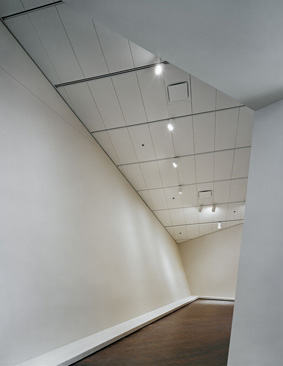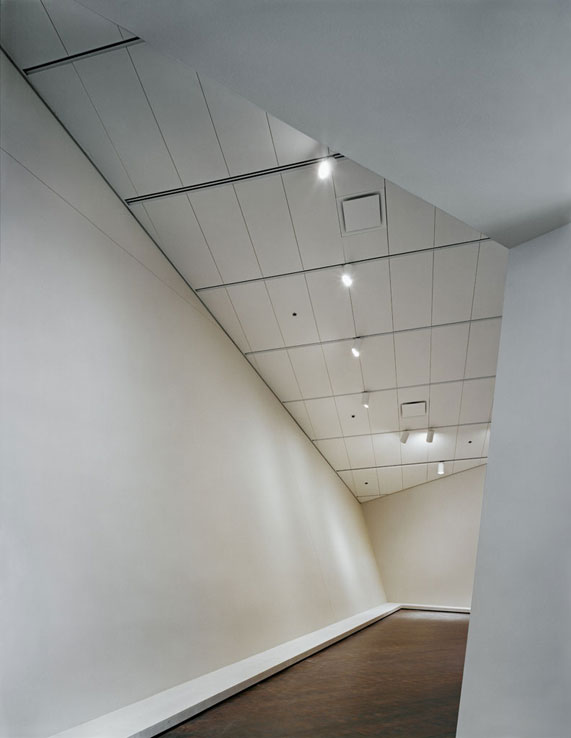
- Sector: Culture/Arts
- Location: Denver, Colorado
- Architect/Specifier: Studio Daniel Libeskind with Davis Partnership
- Product(s): Techstyle Acoustical Ceilings, Classic Series, and Nysan Shading



- View details and specifications
- Request product brochure
- Get more case studies via web or email
- Call 800-727-8953 for more info or use our Global Directory

What's most intriguing is that Libeskind's product is popular among the local set. The free-form circulation and dynamic installations may explain the museum's broad appeal. "I have met small kids on the site, I've met elderly-people from all walks of life, and many who don't usually go to museums. And they just like being there," says Libeskind.
The larger attraction for the public, however, may be attributed to the powerful effect of the museum on the city as a whole. Using the theatricality of his building and his own design for a five-story loft-condominium facing the museum, Libeskind has transformed this area of Denver into a cultural center. A resulting narrow street and open plazas bring the nearby Colorado History Museum and Michael Graves' 1995 Central Library into what serves as a larger civic ensemble. "The building grows from a dot on the ground into what I attempted to create, a plaza of the arts," says the architect. "It's a new urban setting, a new living room for the city."
To earn this commission, Libeskind won a closely watched competition two years before his Freedom Tower proposal for the World Trade Center site. His deconstructivist scheme won out over quieter designs submitted by Arata Isozaki and Thom Mayne. After he won, he set out on a path that would bump up the volume still more, in the process challenging both the arts elite and city officials to think anew.
To those who have asked him "How was this done in Denver?" the architect responds that the locals' reaction shows architectural activism can work. Libeskind's particular success in Denver can be credited to his accurate sense of how the local community (not to mention his clients) will relate emotionally to his designs. More than a metaphor for the looming Rockies, his titanium-clad museum "is a symbol of 21st-century industries, like the railroad that brought so much to this city in the 19th century," he says. And of the futuristic forms? "It's the pioneering spirit of the American West, inspired by the people who in just a hundred years, created a brand new city."











